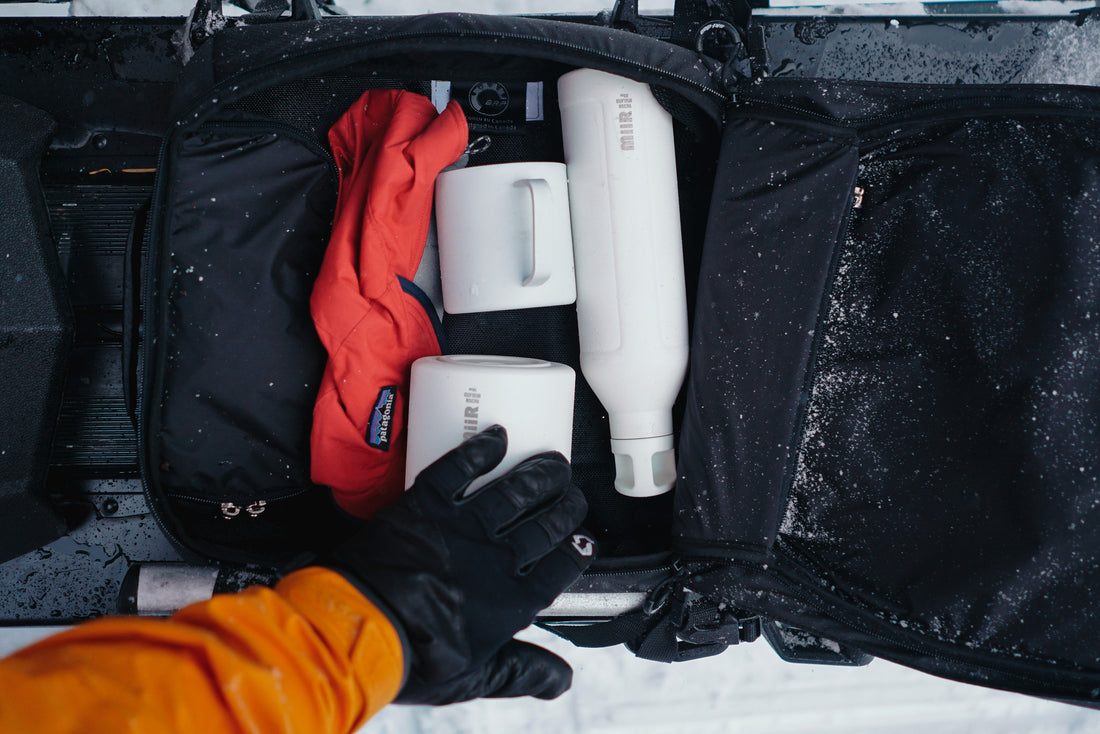Here is what you need to know about the types of insulation for your beverage and how to choose the best insulated water bottle or tumbler for all of life's adventures.
The 3 Fundamental Types of MiiR Insulation
Here are three commonly used types of insulation.
Single Wall Insulation
That being said, single wall insulated stainless steel water bottles and tumblers. These cups and bottles will still keep your drinks cold for extended periods of time— more so than if you left them uncovered. Single wall insulated water bottles from an eco-friendly company are still better than letting plastic water bottles pile up in the landfill. They're an affordable option for companies using insulated water bottles as a promotional tool for employees or customers.
Finally, single wall insulated water bottles and cups are all lightweight and portable. If you need something versatile for a quick hike or bike ride, this type of insulation is sufficient.

Double Wall Insulation
When looking for a high-quality water bottle, you can't go wrong with a double-wall insulated bottle. How does double wall insulation work? Just like it sounds, these bottles and tumblers are comprised of two stainless steel walls separated by air. The wall of air between the two layers insulates the cup by forcing heat to transfer through a layer of air.
This design means the heat has to transfer first by conduction through one layer of steel, then by radiation and convection through the vacuum, and lastly by conduction through the other layer of steel.
When you hold a double-wall insulated tumbler, you won't feel the temperature through the outer walls. These are designed to keep your hot drinks hot, and cold drinks cold for extended periods of time. Double-wall insulated bottles and tumblers are ideal for longer excursions, whether that's a day going from meeting to meeting with coffee in hand or that intense trail run you've been training for.
Vacuum Insulation
Vacuum-insulated tumblers and bottles are the cream of the crop. Vacuum insulation is the most efficient form of insulation for stainless steel vessels.
In reality, it's impossible to create a perfect vacuum between the walls. However, by removing as much of the air as possible, convection becomes ineffective. The heat can only radiate between the steel walls. Fewer methods of heat transfer means better insulation, making this product design ideal for those who rely on long-term temperature control.

The 3 Fundamental Types of Heat Transfer
Conduction
Convection
Radiation

How to Choose the Best Insulated Tumbler or Water Bottle
The type of insulation isn't the only thing to consider when looking for the best vessel to keep your hot drinks hot and cold drinks cold. Here are a few key considerations to keep in mind when choosing the best insulated water bottle for your lifestyle.
Cup Holder Compatibility
This consideration may seem silly, but if you've ever tried to put your insulated travel mug in your cup holder only to find that it doesn't fit, you'll understand. Look for insulated tumblers and water bottles that are cup holder compatible.
Mouth Size
Mouth size also plays an important role when choosing an insulated water bottle— its mouth size, not yours! Wide mouth insulated water bottles make it easier to add ice cubes to your drink, or to carry ice (or ice cream) to your destination.
BPA-Free
One of the main reasons to switch to a stainless steel water bottle from an eco-friendly company is to avoid coming in contact with harmful toxins. However, some components of your insulated tumbler or water bottle may still be plastic or rubber. Look for an eco-friendly company that promises a product free of Bisphenol A— or, as we like to call it, Bad Plastic Awfulness.
Medical-Grade Stainless Steel
Your water shouldn't taste like metal. Medical-grade stainless steel interiors are designed to avoid taste transfer. Quality matters when choosing the best insulated water bottle or tumbler to fuel your lifestyle.
Durable Exterior
Look for a product with durable outer walls to prevent scrapes, dents, and punctures while you're on your adventures. A powder coat finish— as they use on gym equipment— is the best way to protect your investment in a high-quality water bottle: that and a lifetime warranty.
MiiR offers a variety of double wall vacuum insulated water bottles and tumblers to keep you hydrated, wherever life may lead you.









